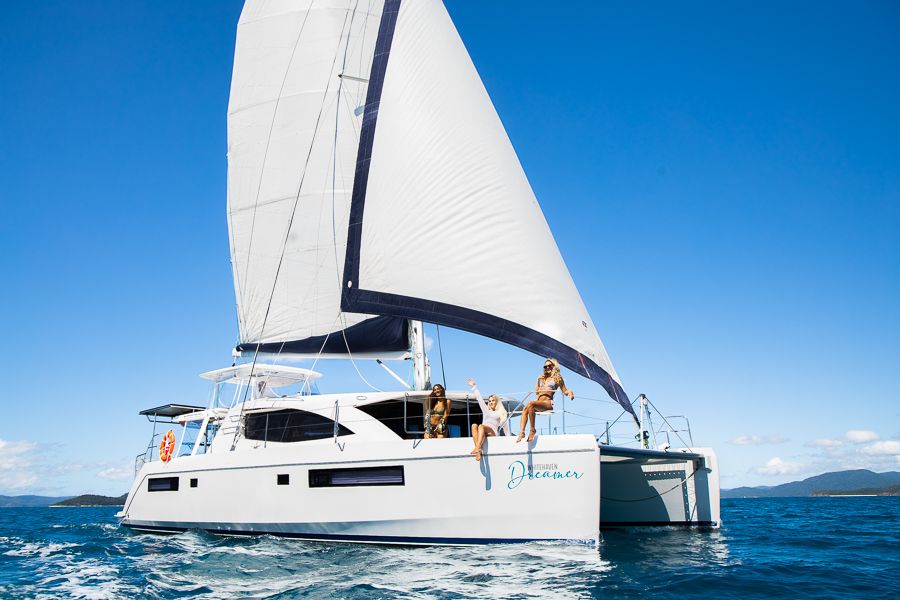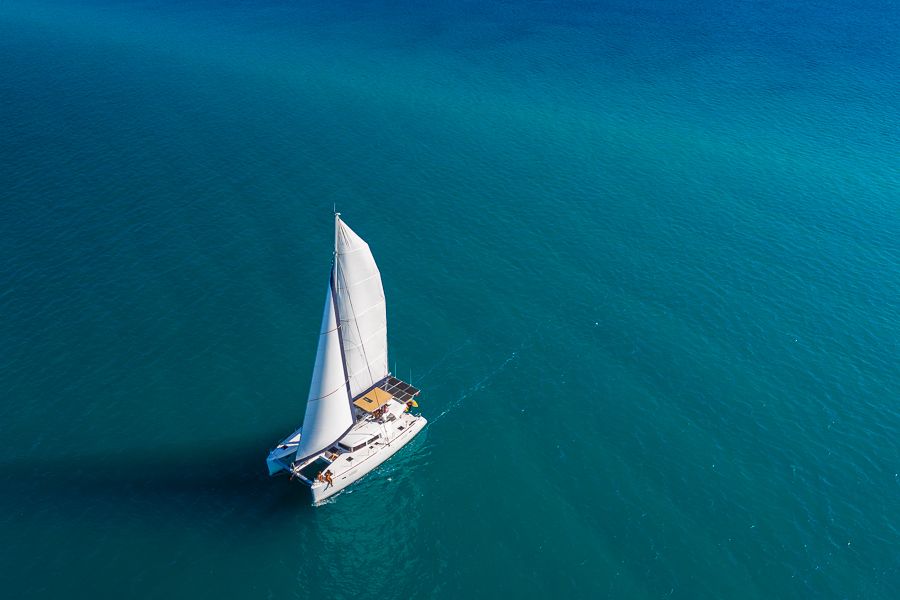Which Time Of Year Is Best For Sailing In The Whitsundays?
The Whitsunday Islands, situated in North Queensland, are famed not only for their unparalleled beauty, but also the fact that they are amazing to visit year-round.
With that said, the weather understandably plays a pretty huge part in helping many people choose which time of year to visit for a sailing trip. Benefiting from a subtropical climate, a year in the Whitsunday region can fairly simply (but not restrictively) be broken down into two very contrasting seasons: wet and dry season.
Within both of these categories, however, are different pros and cons that will provide unique experiences out on the water, and therefore a more in depth analysis on a month-to-month basis is required to help highlight these.
So without further ado, here is your guide on how to decide which time of year is best for sailing in the Whitsundays for you!
January - March
Kicking off each year in a rainy fashion, the wet season generally commences in January (though sometimes starts as early as December) and runs right through until the end of March (and sometimes into early April).
The higher probability of wet weather doesn’t deter most people, however, as this time of year is still incredibly popular for sailing in the Whitsundays. When it’s not raining, these months provide some of the most beautiful hot sunny (and not to mention longer) days, and the islands and surrounding areas are even greener and more lush than usual thanks to the large amount of rain. In addition to this, the warmer sea temperatures around this time are absolutely perfect for snorkeling and scuba diving!
But with the higher chance of wet weather comes the higher possibility of tropical storms, really high humidity and even the chance of a cyclone (thankfully, we haven’t seen one here since 2017). The warmer sea temperatures are also more hospitable for some of the less desirable creatures of the ocean, such as the box jellyfish.
April - June
As the rain gradually subsides and the temperatures begin to cool, so do the crowds and the jellyfish. The islands are still at their most lush thanks to the rainy season, and despite being cooler and less humid, the water temperature is still perfect for snorkeling and scuba diving.
In terms of sailing, the trade winds tend to pick up over April and May, meaning it’s the best time to hoist those sails to pick up some speed around the islands.
Commonly referred to as a ‘shoulder season’ between peak and off-peak season, the months of April, May and June are ideal months for those who want to go boating in the Whitsundays.

Sail Through The Whitsundays On These Amazing Sailing Boats
July - September
Typically referred to as off-peak season in the Whitsundays, the winter months are usually the least busy, and nobody really seems to have any idea the reason why?
The daytime temperature is consistently warm (usually hovering around the 24-26 degrees celsius mark) for its duration and the evening temperature drops to as low as the early teens (making for perfect sleeping conditions).
In addition to this, the lack of rain almost guarantees days filled with uninterrupted sunshine, ensuring that the islands can be experienced in the idyllic paradise-like conditions that they are famed for.
Perhaps the main reason that the winter months are considered the best for sailing in the Whitsundays, is due to the abundance of incredible marine life that call the islands home at this time. Humpback whales migrate north in droves to use the islands as their very own aquatic maternity ward, meaning that any boat that goes out on the Whitsundays at this time has an extremely high chance of seeing these magnificent beasts before they migrate south again towards the end of September.

As well as whales, it’s also mantaray season, and the extra crystal turquoise waters make the visibility good enough to see the turtles, dolphins and various other species that call the waters around these beautiful islands home.
Both the Airlie Beach Race Week and the Hamilton Island Race Week happen in these months, which solidifies its reputation as a sailing mecca if you’re a keen boating enthusiast!
October - December
For October and November, you’re in for an absolute treat when it comes to sailing in the Whitsundays. With the cooler winter months firmly behind, you’ll notice the days get warmer and warmer with still very little rain.
Generally considered to be the peak season for sailing in the Whitsundays, you’ll be blessed with mesmeric sunrises and radiant sunsets on a daily basis, that are as soothing for the soul as they are for the eyes.
The sea conditions tend to be very calm in October and November as well, generally glassy with just mild winds. All of these things combined make it the most popular time to be out on the water.
The only potential downside to these months is that, due to the increase in sea temperatures, late October tends to mark the beginning of the stinger season. But don’t let that put you off- jellyfish stings are extremely rare (especially as most boat companies in Airlie Beach make the wearing of wet suits mandatory from this point of the year onwards).

So when is the best time to sail in the Whitsundays?
If, after having read up until this point, you’re still scratching your head and unable to decide on when the best time to go sailing in the Whitsundays is, then I’ll try and put it as simply as possible:
There isn’t a best time, as it’s equally as amazing in February as it is in August, in June as it is in November and July as it is in December! 
Yep, it really all comes down to personal opinion and preference! With each period comes its own individual quirks and perks, but they all share one unifying characteristic- you’re going to have the best time of your life whenever you visit!
And that’s pretty damn special if you ask me!













